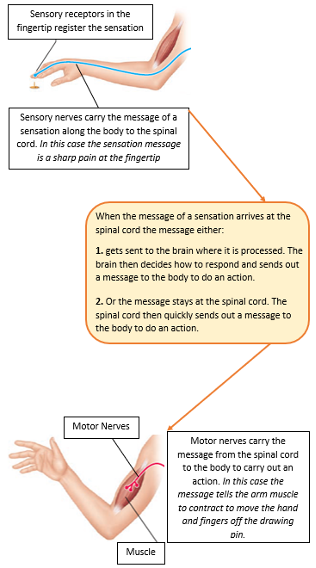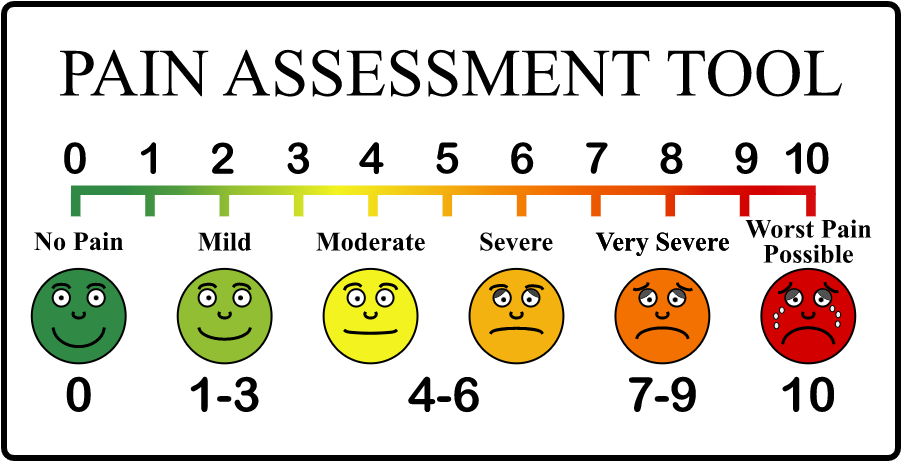In this lesson, we changed our professional practice focus from the topic of dispensing legislation to the topic of dispensing and compounding calculations.
Calculations for dispensing and compounding

Compounding is the process of preparing customised medications that are not commercially available.
For example, preparing a cream containing a combination of two or more active ingredients that are unavailable in a single commercial product. Ingredients are carefully measured in the appropriate dosage and mixed or combined to the specific needs of the patient.
Use your calculations and number skills
As a pharmacy technician, it is vital that you possess accurate measurement and calculation abilities for these tasks. A strong set of numerical skills guarantees that patients receive the accurate dosage of medication as prescribed, allowing them to achieve the maximum benefits from their prescriptions.
The metric system
The metric system is a system of measurement that is known as the International System of Units (SI). This system is used worldwide by most countries.
For the next activity, type in the appropriate word to match the letter to complete the table correctly. We've provided the first answer to help you out.
| Measurement | Abbreviation |
|---|---|
| A | kg |
| gram | B |
| milligram | C |
| D | mcg or µg |
| litre | E |
| millilitre | F |
Converting metric units
It is important to know and feel confident about the relationship between the different sizes of weights and volumes.
This will allow you to convert metric units from bigger units to smaller units or smaller units to bigger units. For example, converting a measurement in kilograms (big) to grams (small) or millilitres (small) to litres (big).
To help with understanding this, look at the following table that shows the metric system prefixes (a prefix is a word part that is added to the beginning of a word, and they often come from the Latin or Greek languages).
| Prefix | Value (of the basic unit) | Decimal |
|---|---|---|
| Nano (n) | 1/1,000,000,000 (one-billionth) | 0.000000001 |
| Micro (mc) | 1/1,000,000 (one-millionth) | 0.000001 |
| Milli (m) | 1/1,000 (one thousandth) | 0.001 |
| Centi (c) | 1/100 (one hundredth) | 0.01 |
| Deci (d) | 1/10 (one-tenth) | 0.1 |
| Kilo (k) | 1,000 (one thousand times) | 1000 |
Watch: Converting Metric Units (8:56 minutes)
Converting units may be something you already feel confident with, but you can watch this short video about converting metric units to review your knowledge.
Common units and conversions
The most common units and conversions that you will be using in the dispensary are:
- kilograms
- grams
- micrograms
- litres
- millilitres.
Diagram 1 below shows how to convert between bigger and smaller units of weight:
Diagram 2 below shows how to convert between the volume units of litres and millilitres:
Decimal points
The key to understanding the relationship in the metric system is the fact that the decimal point must be moved the correct number of places in the correct direction. This may require adding zeroes where needed. This was demonstrated in the YouTube video that you may have watched above.
To check your understanding of these concepts, complete the table in this worksheet and then check your work against the answer below.
Now, look at conversions in some real-life situations and answer the following questions.
Ratios recap
A ratio is a comparison between two numbers that indicate how much of one thing there is in relation to another. Ratios are written with a colon (:) between the numbers.
A ratio tells us for every amount of one thing; there is a specific amount of something else.
For example, we have a bowl of fruit containing 20 pieces of fruit. 12 are apples, and 8 are oranges.
We can express the ratio of apples to oranges as 12:8.
We can simplify this ratio as we do with fractions. In this case, our ratio simplifies to 3:2. This means that for every three apples in the bowl, there are two oranges.
Less than a whole: Fractions and Percentages
Fractions recap
A fraction is a way of representing a part of a whole or a portion of a quantity. It is a numerical quantity that represents the ratio of two numbers.
The numerator represents the number of parts that are being considered, while the denominator represents the total number of parts in the whole or the quantity being considered.
Fractions are typically written in the form of a numerator over a denominator, separated by a horizontal line.
Let’s go back to our fruit bowl to find the fraction of each fruit. We first need to determine the total number of fruits in the bowl, which is 12 apples + 8 oranges = 20 pieces of fruit in total.
- We can express the fraction of apples in the bowl as 12/20. If we simplify this fraction, the fraction becomes 3/5
- We can express the fraction of oranges in the bowl as 8/20. If we simplify this fraction, the fraction becomes 2/5
Percentages recap
A percentage is a way of expressing a part of a whole as a number out of 100. Percent means “per 100” or hundredths and is the same as a fraction in which the denominator is 100. Percent is represented by the symbol %.
Once more, we head back to our fruit bowl to demonstrate how to find a percentage. We already know that we have a total of 20 fruits in our bowl.
To calculate the percentage of apples in the bowl, we divide the number of apples by the total number of fruits and then multiply by 100.
- Percentage of apples = (number of apples / total number of fruits) x 100
- Percentage of apples = (12 / 20) x 100 = 60%
To calculate the percentage of oranges in the bowl, we do the same but use the number of oranges:
- Percentage of oranges = (number of oranges / total number of fruits) x 100
- Percentage of oranges = (8 / 20) x 100 = 40%
NOTE! Now that we have recapped our maths skills, we can leave our fruit bowl behind. In our upcoming lessons, we will take our maths skills and apply them to the calculations and formulas needed for dispensing and compounding in a pharmacy.
Self-directed learning
Spend some time reviewing today’s lesson to ensure you feel confident with the maths concepts.
Learn how to convert between fractions, decimals and percentages by watching this short video with Professor Dave.
As an optional extra to reinforce your maths skills, you may want to look at Professor Dave’s other maths clips, including:
Or you may like to find your own clips or readings on foundational maths skills.
Ka pai! You have completed reached the end of Professional Practice 1 for this week.

So far, we have covered the following topics:
- Legal definitions of dispensing
- Prescription abbreviations
- Prescription formats, including standard and CD prescription forms
- Reading prescriptions accurately and avoiding reading errors
- Service user subsidy categories and funding
- Overview of the dispensing process
- Dispensing process:
- Step 1: Receiving the prescription
- Step 2: Checking the prescription
We continue now with our exploration of each step of the dispensing process.
Step 3: Determining priority of the prescription
In this step, you will do a quick check to see if you have stock for the prescription so you can give the customer a time frame for collection. The customer may decide to either wait or call back at another time.
Pharmacy owings
To learn about this, let's look at a scenario.
- Read Section 7.19 Owings on page 62 of the Pharmacy Procedures Manual to help you answer the scenario question.
- Select the label or the (+) next to each of the three tabs below to guide you through a scenario.
You receive a prescription from Tamati Jones for (1) a nasal decongestant, (2) paracetamol, and (3) an antibiotic to treat a chest infection.
You check the prescription form and notice that all legal and funding requirements have been met. Tamati asks how long it will be before his prescription can be collected because he is parked in a 10-minute parking space and doesn’t want to get a ticket. You tell him you will need just a few seconds to check your stock and will be back shortly to let him know.
When you check, you find that you have enough decongestant and paracetamol for the prescribed amount but only 4 days’ supply of the 10-day course of antibiotics. You know that it is important for Tamati to start his antibiotics as soon as possible. You can order more stock of the antibiotic, but it won't be delivered until late tomorrow afternoon.
- Select the best course of action from the list below:
Step 4: Clinical assessment

In this step, the pharmacist will be thinking holistically about the customer's health and assessing if the prescription is appropriate and suitable for the customer. To do this, the pharmacist and technician will consider the following information, where appropriate:
- Has the customer taken this medicine before?
- Is the customer on any other prescribed medicines?
- Is the customer taking any OTC medicines, herbal, natural or complementary remedies?
- Does the customer have any allergies?
- Is the customer pregnant or breastfeeding?
- Is the dose, dose form and route appropriate for this customer?
- Are there any potential medicine interactions?
- Are there any contraindications to this customer taking the medicines prescribed?
Interactions and contraindications
Let’s look at what is meant by the following words in the context of medicines:
- interactions
- contraindications
Carry out your own internet search for the meanings of the above words, then answer the multiple-choice questions below.
When you are using RxOne or Toniq during the dispensing process, the system will alert you to possible interactions. You will then bring these alerts to the attention of the pharmacist.
Step 5: Computer input
In this step, you will enter the prescription into the computer. This will record all the details and generate a label. Most dispensary computers are on constant “stock control”, so a supply order will be generated if necessary.
Recording and storing prescription information

The Medicine Regulations 1984 state that the following prescription information (generally kept digitally in the computer) must be recorded and kept for a least three years:
- The date of the transaction
- Name and address of the patient
- Name of medicine supplied
- Quantity of medicine supplied
- Name of prescriber
- Unique identifying number or code of the prescription
- Keeping the files containing drug information up to date with adverse drug reactions and interactions
- During this step, you should verify that the patient’s personal details are current and the medication matches their previous history. As mentioned previously, the system will alert you to any potential medicine interactions with medicines already dispensed to the customer.
It is also important to check if they are taking any OTC products, herbal remedies, supplements, or complementary medicines that have the potential to interact with what has been prescribed.
Step 6: Generating labels
Generating or producing medicine labels for prescription medicines requires an understanding of the dispensing software.

You also need an understanding of the legislation that sets out the legal requirements for medicine labels. This is what we will be focusing on now.
The legislation and supporting resources for medicine labels can be found in the following documents:
- Medicines Act 1981
- Medicines Regulations 1984
- Misuse of Drugs Regulations 1977
- Guideline on the Regulation of Therapeutic Products in New Zealand: Labelling of Medicine and Related Products
- Health and Disability Services Pharmacy Service Standards
Let’s begin by looking at the legal definition of a medicine label.
Challenge yourself
Take some time and think about why pharmacies generate and stick a label on medicine containers. Use the knowledge you have about legislation, patient rights, and your own experience to create a list. Compare your list to ours when you are done by clicking the label or (+) sign below.
- To identify what medicine is in the container
- To identify who the medicine is for
- To tell the customer how to take and use the medicine
- To give any warnings about the medicine use
- To tell the customer how to store the medicine
- To identify which pharmacy dispensed the medicine
- To show the expiry date of the medicine

Word use
The words used when writing label instructions must be selected carefully. This is to make sure that the instructions are simple, clear, easily understood and not misinterpreted by the customer.
To learn more about selecting and ordering the words for label instructions, select the (+) on each of the six tabs below.
For example, if you are writing instructions for Losec® enteric-coated tablets, the wording you would use is “Take one tablet”. You would not write, “Take one capsule”. This would be confusing to the customer when they open their medicine to see their medicine in tablet form, and the instructions indicate it is in capsule form.
NOTE! For medicines that are used externally, such as creams or drops, the words “NOT TO BE TAKEN” or “FOR EXTERNAL USE ONLY” must be included on the label.
Examples are shown in this table of unspecific words not to use and what you could use instead.
| Don’t use | Use |
|---|---|
| To be taken | Take |
| Not to be taken | Do not swallow |
| Use sparingly | Apply thinly |
| Put TWO drops into | Instil TWO drops |
Have a look at the examples in the table below. Do you notice the difference?
| Don’t use | Use |
|---|---|
| Take 2 tablets | Take TWO tablets |
| 3 times a day | THREE times a day |
The examples in the table show how confusing it can be to read numbers when they are next to each other. It would be easy to mix up the number of doses and the frequency.
| Don’t use | Use |
|---|---|
| Take TWO 4 times a day | Take TWO tablets FOUR times a day |
| Take TWO TWICE a day | Take TWO tablets TWICE a day |
For example, 2.5ml should be expressed as:
- TWO AND A HALF ML, or
- TWO AND A HALF ML (2.5ml)
To sum up:
- Keep it simple - In a language appropriate to the patient’s needs
- Keep it clear - Indelible and legible, of the size and type of lettering appropriate to the patient’s needs. Write numbers in word form and capitalise.
- Keep it clean - Free of errors and overtypes
- Keep it plain - Free of unnecessary words, decoration, or embellishments
Self-directed learning
Watch: The dangers of mixing drugs - Celine Valery (5:04 minutes)
Look at the science of why mixing drugs and drug interactions with other substances can lead to dangerous health complications by watching this short video called ‘The dangers of mixing drugs’.
What does it look like when someone has an allergy to a medication? Do your own investigation into the signs and symptoms of a medicine allergy and what a person should do if they suspect they are experiencing one.
Whakamihi - you have completed another week of Introduction to Dispensing!

In this lesson, we'll explore a wide range of health disorders. We will review and discuss how to assess the health of our pharmacy customers to decide on appropriate treatment requirements and advice.
We will also consider the appropriate and effective communication techniques we can use to provide this advice so that our customers receive the best care possible.
Assessing
As you know, effective communication is vital in your interactions with your customers. This is especially true when we are finding out about their health care needs so that you can give the appropriate advice.
Listening and asking the right questions are important communication techniques to use. A misunderstanding in communication at this point can mean the customer goes away without the help they need and potentially with the wrong advice that could put their health at risk.
WWHAMMPA
In this activity, you can check what you remember about the questions you should be asking when assessing a customer’s health issue.
The WWHAMMPA acronym is a tool to use to help you remember to ask all the relevant questions before giving any advice. The customer's responses will prompt you to ask further questions as needed to get an accurate picture of their health concern.
Reflect on what you’ve learnt.
Reflect on your experiences interacting with customers:
- Make a list of what communication skills and techniques you have used when assessing a customer’s health
- Comment on why you used this skill or technique
For example, you may have provided a customer with a pharmacy self-care card as well as provided verbal advice on children’s fever. Using both verbal and non-verbal communication helps the customer remember the information.
Pain
As a pharmacy technician, you'll encounter customers who are experiencing a variety of pain levels, ranging from discomfort to severe pain.
Therefore, it's crucial for you to have a good understanding of what pain is, its causes, and appropriate treatments. This knowledge will be vital in your role as you assist customers who are dealing with health disorders associated with different levels of pain.
So, let’s start with a review of what you know about pain.
1. Start with this quiz. Select any or all answers that apply.
2. Watch this short video about pain. Then, answer the questions in the following quiz. You may also like to make your own notes from the video about pain.
Watch: Pain Explained by Central London Community [...] (6:19 minutes)
Reflex arc
We have just reviewed what happens when signals go to the brain, as described in Point 1 of the diagram.
So now let’s look at Point 2, which is called the Reflex Arc.

The Reflex Arc does not involve the brain.
Watch: reflex arc (1:06 minutes)
Watch this short video to find out why not.
Referred pain
If you have ever had an infection or inflammation of the sinuses, you may have felt referred pain.

Sinus pain can be felt in the areas where the sinuses are located, such as around the eyes, nose, cheeks, and forehead, but it can also be felt away from the sinuses in such places as the ears, teeth, and gums.
Referred pain is any pain that is felt in a location other than the source of the pain. It happens when pain signals from an internal organ or tissue are sent to the same spinal cord segment as the signals from a nearby area of skin or muscle. This causes the brain to think that the pain signals from the internal organ or tissue are coming from the skin or muscle.
Referred pain can make it difficult for a person to know what is causing their pain unless they see a doctor to have the pain assessed and diagnosed. There are, however, some common sites of referred pain.
Carry out your own investigation!
Find out at least three common sites where referred pain can be felt. For each site, describe where the body damage is located. Write your answers and share them in class.
Assessing pain
When assessing a customer with pain, you will be asking all the WWHAMMPA questions, including the following:
Think about the last activity. There was a question we didn't ask. It's very important, can you think what it might be?
We forgot to ask the patient to quantify their pain. A simple question would do: How bad is your pain? We can ask the patient to quantify the intensity by using a photo (as shown below), or a number system, like 1-10.

Pain: Treatment and advice
After you have assessed the customer's pain, you will be able to provide the appropriate treatment and advice for the type of pain the customer is experiencing. This may involve treatments to alleviate the underlying cause of the pain, for example, a decongestant for sinus pain.
Your assessment may indicate that the most appropriate advice is to refer the customer to their doctor or the pharmacist.
Pain: When to refer to the pharmacist
It is vital you know when to refer someone with pain to the pharmacist.
You must refer when:
- the pain is very bad
- there is no good reason for the pain
- the pain has not been relieved with a pain reliever they have tried
- the pain is chronic
- the customer is elderly, a baby, or a child
- the customer is on other medications
- the customer has medical conditions
- the customer has had side effects with a pain reliever before
- the customer is pregnant or breastfeeding
- you think the customer may be wanting the tablets for abuse.
Self-directed learning
As a pharmacy technician, you will be providing care and advice for people experiencing pain.
Make a note of your answers to the three questions below.
1. Acute pain
Think about a time that you experienced acute pain, and document your experience:
- Where was the pain located in your body?
- What was the cause of the pain?
- How did it feel?
- What words would you use to describe it?
- How intense or severe did it feel?
- Did the intensity change over time?
- How long did the pain last?
- How did you respond to the pain when it occurred?
- What were your behaviours, actions, and words?
- Did you treat the pain in any way?
- Medicines — what type?
- Other treatments?
2. Chronic pain
Name three causes of chronic pain.
3. Intermittent pain
Briefly state what is meant by intermittent pain.
That’s it! Another week finished. Ka rawe (awesome!).

